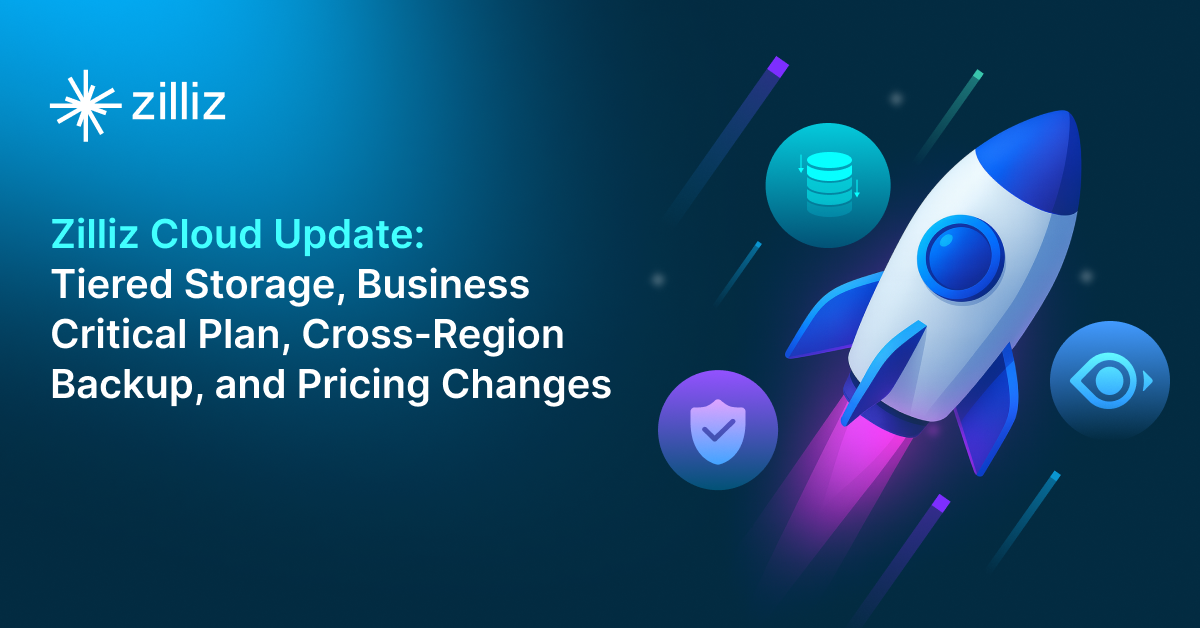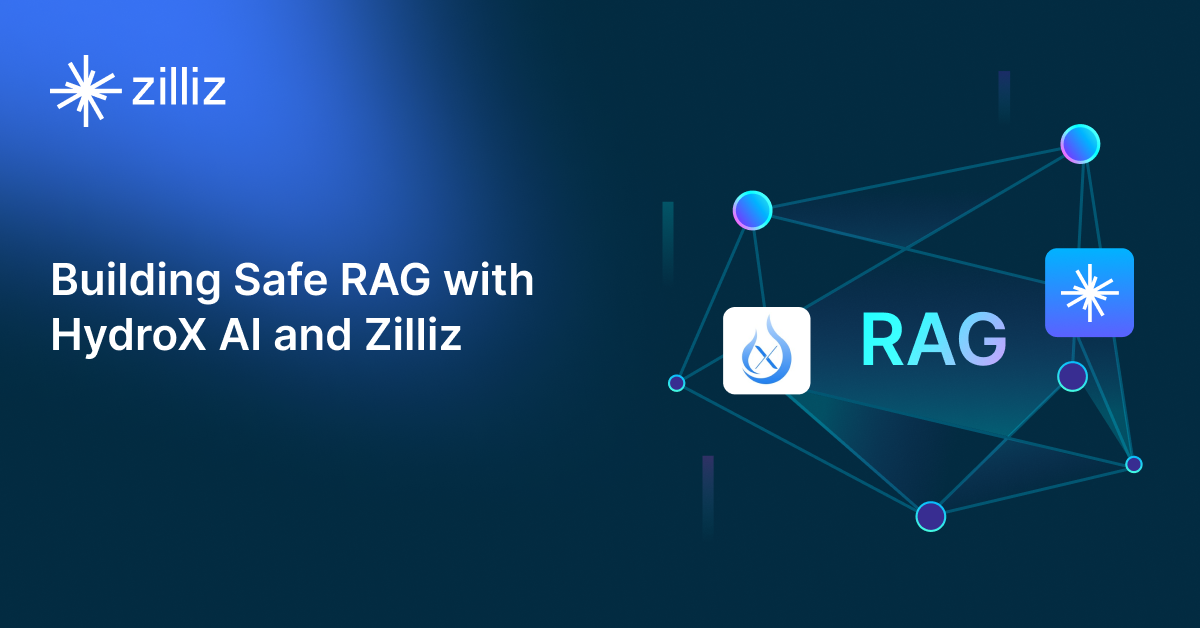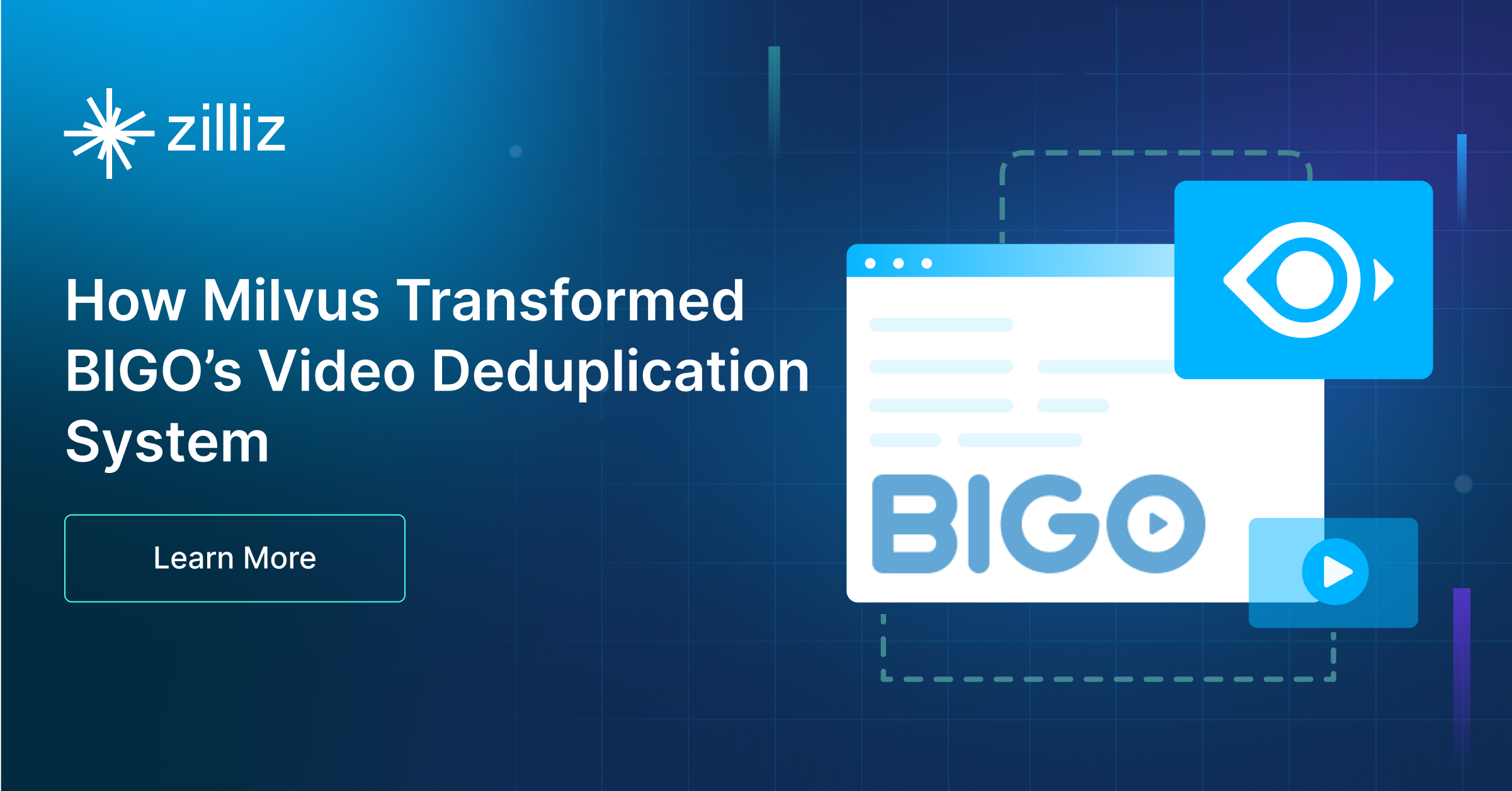Build RAG Chatbot with LangChain, pgvector, Google Vertex AI Claude 3 Opus, and Ollama all-minilm
Introduction to RAG
Retrieval-Augmented Generation (RAG) is a game-changer for GenAI applications, especially in conversational AI. It combines the power of pre-trained large language models (LLMs) like OpenAI’s GPT with external knowledge sources stored in vector databases such as Milvus and Zilliz Cloud, allowing for more accurate, contextually relevant, and up-to-date response generation. A RAG pipeline usually consists of four basic components: a vector database, an embedding model, an LLM, and a framework.
Key Components We'll Use for This RAG Chatbot
This tutorial shows you how to build a simple RAG chatbot in Python using the following components:
- LangChain: An open-source framework that helps you orchestrate the interaction between LLMs, vector stores, embedding models, etc, making it easier to integrate a RAG pipeline.
- Pgvector: an open-source extension for PostgreSQL that enables efficient storage and querying of high-dimensional vector data, essential for machine learning and AI applications. Designed to handle embeddings, it supports fast approximate nearest neighbor (ANN) searches using algorithms like HNSW and IVFFlat. Since it is just a vector search add-on to traditional search rather than a purpose-built vector database, it lacks scalability and availability and many other advanced features required by enterprise-level applications. Therefore, if you prefer a much more scalable solution or hate to manage your own infrastructure, we recommend using Zilliz Cloud, which is a fully managed vector database service built on the open-source Milvus and offers a free tier supporting up to 1 million vectors.)
- Google Vertex AI Claude 3 Opus: This advanced AI model integrates Google's cloud capabilities with Claude's robust language understanding. It excels in generating coherent and contextually relevant content across diverse applications, including chatbots, content creation, and data analysis. Ideal for organizations seeking scalable, high-performance solutions for natural language processing tasks.
- Ollama all-minilm: Ollama all-minilm is a lightweight transformer-based model designed for efficient natural language understanding and generation tasks. Boasting a compact architecture, it excels in scenarios where computational resources are limited, making it ideal for mobile applications and real-time chatbots while maintaining competitive performance in language tasks.
By the end of this tutorial, you’ll have a functional chatbot capable of answering questions based on a custom knowledge base.
Note: Since we may use proprietary models in our tutorials, make sure you have the required API key beforehand.
Step 1: Install and Set Up LangChain
%pip install --quiet --upgrade langchain-text-splitters langchain-community langgraph
Step 2: Install and Set Up Google Vertex AI Claude 3 Opus
pip install -qU "langchain[google-vertexai]"
# Ensure your VertexAI credentials are configured
from langchain.chat_models import init_chat_model
llm = init_chat_model("claude-3-opus@20240229", model_provider="google_vertexai")
Step 3: Install and Set Up Ollama all-minilm
pip install -qU langchain-ollama
from langchain_ollama import OllamaEmbeddings
embeddings = OllamaEmbeddings(model="all-minilm")
Step 4: Install and Set Up pgvector
pip install -qU langchain-postgres
from langchain_postgres import PGVector
vector_store = PGVector(
embeddings=embeddings,
collection_name="my_docs",
connection="postgresql+psycopg://...",
)
Step 5: Build a RAG Chatbot
Now that you’ve set up all components, let’s start to build a simple chatbot. We’ll use the Milvus introduction doc as a private knowledge base. You can replace it with your own dataset to customize your RAG chatbot.
import bs4
from langchain import hub
from langchain_community.document_loaders import WebBaseLoader
from langchain_core.documents import Document
from langchain_text_splitters import RecursiveCharacterTextSplitter
from langgraph.graph import START, StateGraph
from typing_extensions import List, TypedDict
# Load and chunk contents of the blog
loader = WebBaseLoader(
web_paths=("https://milvus.io/docs/overview.md",),
bs_kwargs=dict(
parse_only=bs4.SoupStrainer(
class_=("doc-style doc-post-content")
)
),
)
docs = loader.load()
text_splitter = RecursiveCharacterTextSplitter(chunk_size=1000, chunk_overlap=200)
all_splits = text_splitter.split_documents(docs)
# Index chunks
_ = vector_store.add_documents(documents=all_splits)
# Define prompt for question-answering
prompt = hub.pull("rlm/rag-prompt")
# Define state for application
class State(TypedDict):
question: str
context: List[Document]
answer: str
# Define application steps
def retrieve(state: State):
retrieved_docs = vector_store.similarity_search(state["question"])
return {"context": retrieved_docs}
def generate(state: State):
docs_content = "\n\n".join(doc.page_content for doc in state["context"])
messages = prompt.invoke({"question": state["question"], "context": docs_content})
response = llm.invoke(messages)
return {"answer": response.content}
# Compile application and test
graph_builder = StateGraph(State).add_sequence([retrieve, generate])
graph_builder.add_edge(START, "retrieve")
graph = graph_builder.compile()
Test the Chatbot
Yeah! You've built your own chatbot. Let's ask the chatbot a question.
response = graph.invoke({"question": "What data types does Milvus support?"})
print(response["answer"])
Example Output
Milvus supports various data types including sparse vectors, binary vectors, JSON, and arrays. Additionally, it handles common numerical and character types, making it versatile for different data modeling needs. This allows users to manage unstructured or multi-modal data efficiently.
Optimization Tips
As you build your RAG system, optimization is key to ensuring peak performance and efficiency. While setting up the components is an essential first step, fine-tuning each one will help you create a solution that works even better and scales seamlessly. In this section, we’ll share some practical tips for optimizing all these components, giving you the edge to build smarter, faster, and more responsive RAG applications.
LangChain optimization tips
To optimize LangChain, focus on minimizing redundant operations in your workflow by structuring your chains and agents efficiently. Use caching to avoid repeated computations, speeding up your system, and experiment with modular design to ensure that components like models or databases can be easily swapped out. This will provide both flexibility and efficiency, allowing you to quickly scale your system without unnecessary delays or complications.
pgvector optimization tips
To optimize pgvector in a Retrieval-Augmented Generation (RAG) setup, consider indexing your vectors using GiST or IVFFlat to significantly speed up search queries and improve retrieval performance. Make sure to leverage parallelization for query execution, allowing multiple queries to be processed simultaneously, especially for large datasets. Optimize memory usage by tuning the vector storage size and using compressed embeddings where possible. To further enhance query speed, implement pre-filtering techniques to narrow down search space before querying. Regularly rebuild indexes to ensure they are up to date with any new data. Fine-tune vectorization models to reduce dimensionality without sacrificing accuracy, thus improving both storage efficiency and retrieval times. Finally, manage resource allocation carefully, utilizing horizontal scaling for larger datasets and offloading intensive operations to dedicated processing units to maintain responsiveness during high-traffic periods.
Google Vertex AI Claude 3 Opus optimization tips
Claude 3 Opus on Google Vertex AI is a high-performance model suited for complex reasoning tasks in RAG applications. Improve retrieval by employing multi-step document ranking to ensure only the most relevant data is passed to the model. Structure prompts effectively, placing key facts upfront to enhance response quality. Keep temperature low (0.1–0.2) for factual accuracy and fine-tune top-k/top-p for nuanced control. Utilize Google Vertex AI’s resource scaling to manage workload surges efficiently. Implement response caching for frequently accessed queries to optimize cost and speed. If using Opus alongside smaller models, deploy it selectively for queries requiring deep analytical capabilities while using lighter models for routine tasks.
Ollama all-minilm optimization tips
To optimize the Ollama all-minilm model in a Retrieval-Augmented Generation (RAG) setup, consider fine-tuning the model on domain-specific data to enhance its relevance and accuracy. Use efficient indexing techniques like FAISS for faster retrieval of embeddings from large datasets, ensuring smooth interaction between retrieval and generation phases. Adjust the temperature and top-k sampling parameters during generation to balance creativity and coherence based on your application needs. Monitor GPU utilization and adjust batch sizes to optimize throughput while maintaining responsiveness. Lastly, regularly evaluate and update the retrieval corpus to ensure the model generates the most pertinent information, improving overall performance.
By implementing these tips across your components, you'll be able to enhance the performance and functionality of your RAG system, ensuring it’s optimized for both speed and accuracy. Keep testing, iterating, and refining your setup to stay ahead in the ever-evolving world of AI development.
RAG Cost Calculator: A Free Tool to Calculate Your Cost in Seconds
Estimating the cost of a Retrieval-Augmented Generation (RAG) pipeline involves analyzing expenses across vector storage, compute resources, and API usage. Key cost drivers include vector database queries, embedding generation, and LLM inference.
RAG Cost Calculator is a free tool that quickly estimates the cost of building a RAG pipeline, including chunking, embedding, vector storage/search, and LLM generation. It also helps you identify cost-saving opportunities and achieve up to 10x cost reduction on vector databases with the serverless option.
 Calculate your RAG cost
Calculate your RAG cost
What Have You Learned?
By now, you’ve unlocked the magic of building a RAG system from the ground up! You’ve seen how LangChain acts as the glue, elegantly orchestrating the flow of data between components while simplifying complex workflows like retrieval and generation. Pairing it with pgvector—a Postgres extension that turns your database into a lightning-fast vector store—you learned to store and query embeddings efficiently, bridging the gap between unstructured text and machine-readable vectors. Then came the star of the show: Google Vertex AI’s Claude 3 Opus, a cutting-edge LLM that turns retrieved context into coherent, human-like responses, showcasing its knack for handling nuanced queries. And let’s not forget Ollama’s all-minilm embedding model, which transformed your raw text into rich semantic vectors, proving that lightweight models can pack a punch in accuracy and speed!
But this tutorial didn’t stop at the basics—you also picked up pro tips for optimizing performance, like tweaking chunking strategies and balancing cost with quality. The free RAG cost calculator you explored is your new secret weapon for making informed decisions without breaking the bank. Now imagine taking these tools further: refining your pipeline, experimenting with hybrid search, or even integrating multimodal data. The foundation is set, and the possibilities are endless. So go ahead—build that chatbot, revolutionize your knowledge base, or create the next-gen search tool you’ve been dreaming of. You’ve got the skills, the tools, and the vision. Let’s turn those ideas into reality! 🚀
Further Resources
🌟 In addition to this RAG tutorial, unleash your full potential with these incredible resources to level up your RAG skills.
- How to Build a Multimodal RAG | Documentation
- How to Enhance the Performance of Your RAG Pipeline
- Graph RAG with Milvus | Documentation
- How to Evaluate RAG Applications - Zilliz Learn
- Generative AI Resource Hub | Zilliz
We'd Love to Hear What You Think!
We’d love to hear your thoughts! 🌟 Leave your questions or comments below or join our vibrant Milvus Discord community to share your experiences, ask questions, or connect with thousands of AI enthusiasts. Your journey matters to us!
If you like this tutorial, show your support by giving our Milvus GitHub repo a star ⭐—it means the world to us and inspires us to keep creating! 💖
- Introduction to RAG
- Key Components We'll Use for This RAG Chatbot
- Step 1: Install and Set Up LangChain
- Step 2: Install and Set Up Google Vertex AI Claude 3 Opus
- Step 3: Install and Set Up Ollama all-minilm
- Step 4: Install and Set Up pgvector
- Step 5: Build a RAG Chatbot
- Optimization Tips
- RAG Cost Calculator: A Free Tool to Calculate Your Cost in Seconds
- What Have You Learned?
- Further Resources
- We'd Love to Hear What You Think!
Content
Vector Database at Scale
Zilliz Cloud is a fully-managed vector database built for scale, perfect for your RAG apps.
Try Zilliz Cloud for Free


